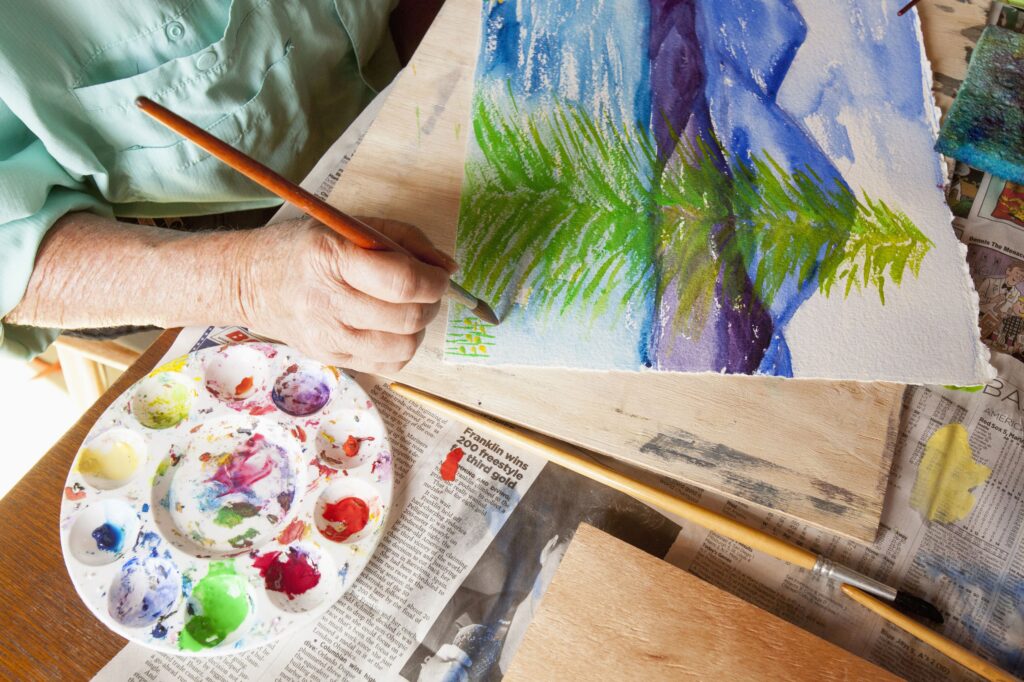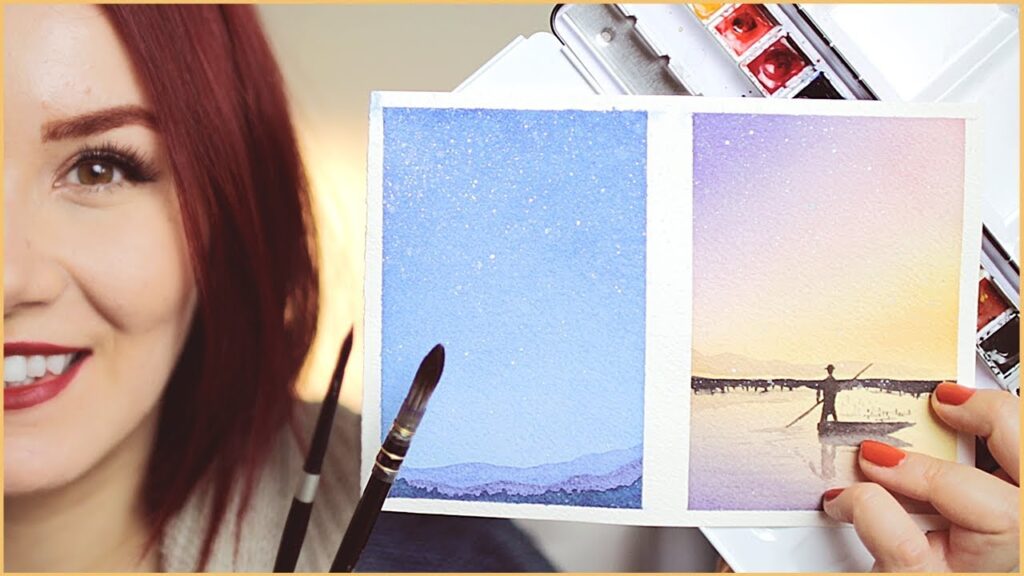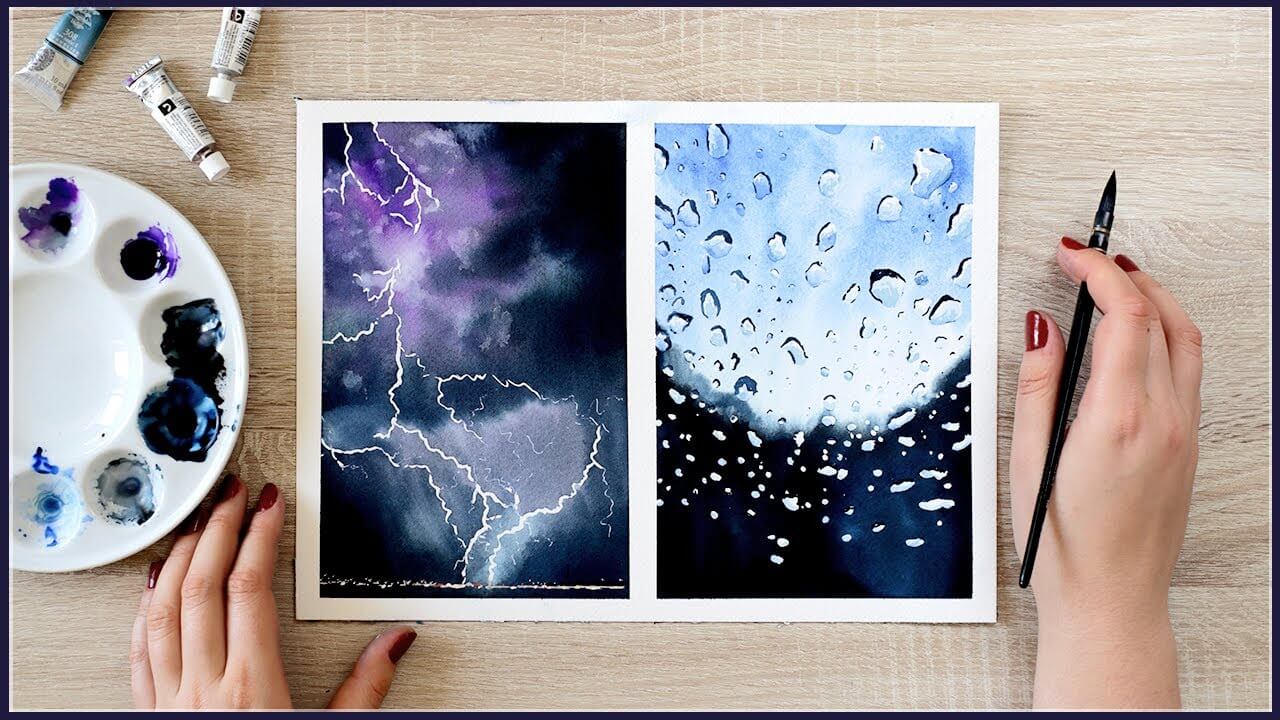Are you a beginner about to start your painting journey, don’t know what type of paint to start with, or are you confused about which to choose between watercolour paint and acrylic paint? Well, you don’t need to because, in this article, you’ll understand the difference between acrylic and watercolour paint.
What is Watercolour Paint?
Watercolor is a paint used by watercolor artists, and it is made up of simple ingredients. Before you go to buy watercolour paint, you need to get about the two most significant ingredients that make up watercolour paint are; pigments and binders. The pigments work to provide the color while the binder, mostly gum arabic, holds every other component together.
While pigments and binders are the main ingredients in watercolor, other additives are also present. These additives can affect the paint’s performance and prolong its shelf life of the paint.
What Are The Different Types of Watercolour Paint?
Depending on your preference, a watercolour paint set comes in tubes and pans. The tubes are a bit more saturated than those in pans. As such, you have to loosen the paint up before you start painting. For those in pans, you can paint directly as soon as you get them. Tube watercolour paints are suitable for painting large areas and washes.
Distinct Features of Watercolour Paint
Transparency
A very notable feature of watercolor is that it comes with different transparencies. You can either have it as extremely transparent, semi-transparent, or opaque. These different transparencies make watercolour paint fun as you can use them to create several layers and experiment with the vibrancy it produces.
Drying Time and Clean-Up
The average drying time for watercolor is between 5 to 15 minutes. If you’re considering going into watercolour painting, you don’t have to worry about this. Even if your watercolour paint gets dried up, you can easily reactivate it by adding some water. You should, however, note that the drying up time is dependent on factors like the amount of water added or the quantity of water used.
Cleaning up watercolor is easy because it is water-based. So, if you are the type that likes to travel and paint, then you can opt for watercolour painting. You can easily wash it off your brush, and even if your cloth gets stained during painting, you can quickly get the paint off using a wet cloth.

Cost
Watercolour paints are affordable and can last you for a very long time. With watercolour paint, you don’t have to worry about wastefulness because you can always reuse it by adding water. While a watercolour paint set is generally affordable, different brands are available, so you compare and decide to buy the watercolour paint that will suit your pocket.
Lightfastness
Lightfastness is when the paint can retain its color after exposure to sunlight. There are various ways used to measure lightfastness. It can be excellent, good, or poor. Generally, watercolour paint doesn’t have good lightfastness. It can easily fade away if not properly protected. The paper can also become brittle as well.
Approaching Watercolour Painting
It is often advised that when approaching watercolour painting, it is best to start with light colors. Meaning you paint from light to dark. Once you paint with a dark color, you can’t undo your painting. Also, lighter colors will not show when covered by dark colors. It would be best if you also considered leaving some spaces unpainted to have them come through as white.
What Are Acrylic Art Paints
Acrylic paints are non-complex paints. These paints are made up of three components which include; pigment, resin, and binder. The resin in this paint is plastic-based and artificial. It differs from those found in watercolor. Acrylic is more versatile in nature and can be tweaked to give a watercolor effect.
Different Types of Acrylic Paint
Acrylic paints come in different forms. You can have them in tubes, jars, and bottles. Also, you can have it as standard paints, various fluid forms, and those that are reworkable.
Unlike watercolour paint that have average drying times, acrylic paints do not. They have several drying times. The longer the drying, the better. Some mediums can alter the drying time, transparency, and other properties of acrylic paints. They include pastes, gels, and other mediums. This possibility makes acrylic an excellent option for mixed-media arts. Unlike watercolour paints, acrylic paints cannot be rescued after drying up and cannot be easily removed once it stains your cloth. So, it would be best to put on an apron when painting with acrylic paints.

Distinct Features of Acrylic Paint
Transparency
Acrylic paints are brighter than watercolour paints and are more opaque. Also, it is important to note that you can thin out acrylic paints to look more like watercolour paints, but even with this possibility, it still looks milky.
Drying Up Time and Clean Up
Acrylic paint has a habit of drying up quickly. It takes about 10 to 20 minutes for the paint to dry up, and once it does, you cannot reactivate it with water. The result of the dried paint is shining and darker in appearance.
Cost
Unlike if you want to buy watercolour paint, acrylic paint is a bit more expensive. It would help if you also kept in mind that acrylic paint, once dried up, cannot be reused. You’ll need to discard them, making you incur more costs. While this is the case with acrylic paint, it is still possible to imitate watercolor by adding water. It can also be used as a paste to create an oil-paint-like effect.
Lightfastness
Compared to watercolors, acrylic paints have a higher rating in terms of lightfastness, and this you can easily observe on the container when buying from stores. All you have to do is look out for ratings on the labels.
Approaching Acrylic Painting
For depth, you start acrylic painting by painting in the dark to light colors. However, you can also paint from light to dark because of its versatility. However, it would help if you kept in mind that when these paints dry, they become darker, meaning the wet version may be slightly different from the dried version. Due to this feature, blending might be a bit difficult.
Understanding the basic features of the type of paint to work with is always the best. With the above explanation, you can easily decide what type of paint to use for your painting works, either as an expert or a beginner.
More articles:
Watercolor painting tips for paint enthusiasts
What to look out for when purchasing a watercolor paint
Watercolor paint techniques to help you paint better
